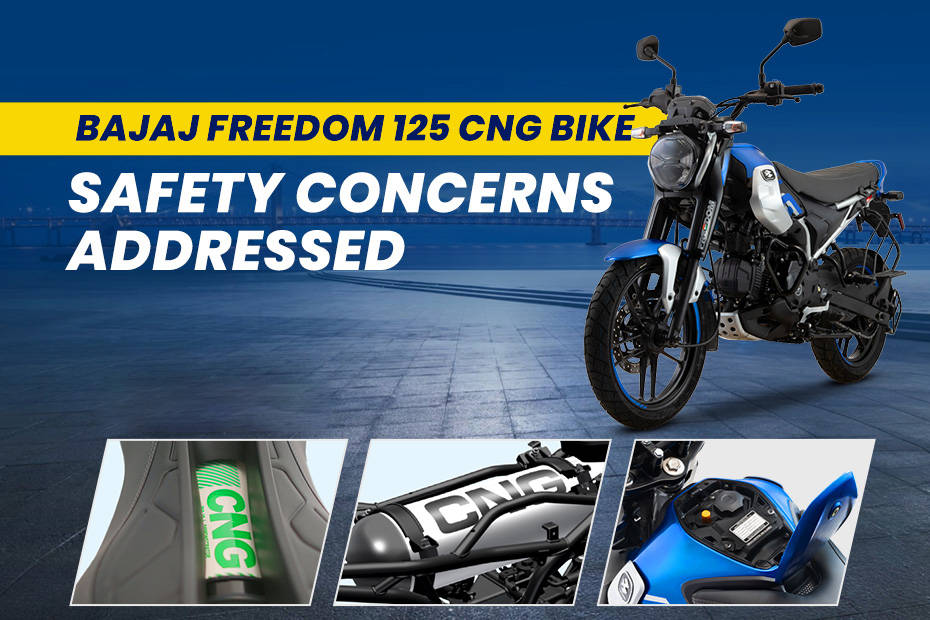Bajaj Freedom 125 CNG Bike: Bajaj Addresses CNG Tank Safety Concerns
Modified On Jul 5, 2024 08:16 PM By Sahilfor Bajaj Freedom 125
- 5080 Views
The CNG bike has been crash-tested in 11 different ways including impact tests, drop tests and even a 10-ton Truck Runover Test

Bajaj has launched the world’s first-ever CNG bike, the Freedom 125 in India, starting at Rs 95,000 (ex-showroom, Maharashtra). Being the first CNG bike, there’ll naturally be a lot of doubts among potential customers about the safety of having a CNG tank in a bike. After all, a motorcycle is a lot more exposed than a car. Bajaj says it has thoroughly tested the bike to ensure it is safe for the customers. In fact, the manufacturer claims that it has also undergone 11 different crash and impact tests at Bajaj’s test facility.
Bajaj has crash-tested the bike from multiple angles. In the Front Collision Test, the Bajaj Freedom 125 CNG bike was crashed into a 1.5-ton moving collision barrier with a relative speed of 60kmph to simulate head-on collisions.

The Pune-based manufacturer also conducted a Truck Runover Test, in which a 10-ton truck was driven over the CNG bike. This is to simulate conditions where the rider falls off the bike and the bike gets run over by a truck. In both these tests, the bike withstood the impacts, with the CNG tank remaining intact, maintaining its position as well as its shape without deforming, and retaining pressure without any leakage.
The other 9 tests by Bajaj included a Frontal Pendulum Test, a Rear Impact Test, a Left Side Impact Test, a Right Side Impact Test, a Vertical Drop Test, a ‘50kg Filling Unit Strength Test’, two types of CNG Valve Impact Test (to test whether the valve breaks in case of a direct impact on it) and a ‘20G Pull Out Test’. The impact tests, as the name suggests, involve the bike being hit by a moving collision barrier, and drop tests involve the bike being dropped from a certain height.

Moreover, Bajaj has designed the trellis frame and subframe to ensure the safety of the CNG cylinder. Both the frame and subframe work as a cage to keep the cylinder secure and prevent any damage in case of impacts or collisions, enhancing the overall safety of the bike. The engine is also positioned away from the CNG cylinder, so that the heat from the engine does not affect the CNG tank. This is particularly important as the CNG tank contains pressurised gas, and gas by nature expands when it heats up.
Additionally, you will have to get off the bike and stand at least 5 feet away while getting the CNG tank filled. This is an essential precautionary measure at every CNG fuel station, to prevent any mishap in case the CNG cylinder explodes under any circumstances. For more details on the Bajaj Freedom 125 CNG bike, you can check out the launch story here.
